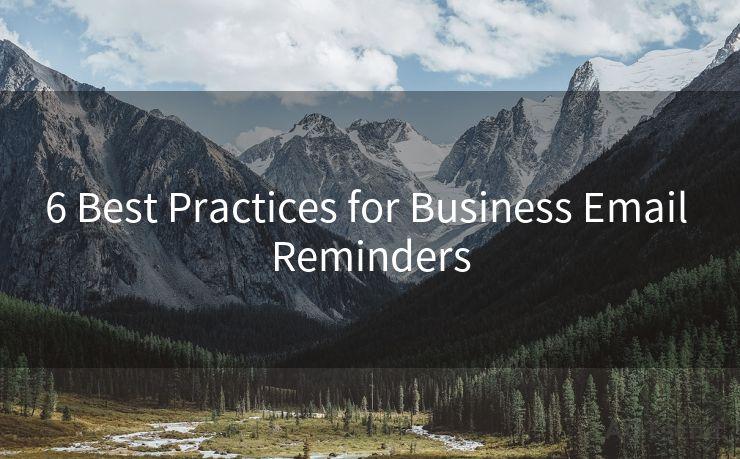6 Best Practices for Business Email Reminders




In the fast-paced world of business communication, email reminders play a crucial role in ensuring tasks are completed and deadlines are met. However, sending effective reminders is an art that requires finesse and consideration. Here are six best practices for crafting business email reminders that get results.
🔔🔔🔔
【AOTsend Email API】:AOTsend is a Managed Email Service for sending transactional emails. Support Email Types: reminders, authentication, confirmations, notifications, verification codes, invoices, password resets, account activations, billing statements, two-factor authentication (2FA), and one-time passwords (OTP) emails, etc. $0.28 per 1000 Emails. 99% Delivery, 98% Inbox Rate.
You might be interested in:
Why did we start the AOTsend project, Brand Story?
What is a Managed Email API, How it Works?
Best 25+ Email Marketing Platforms (Authority,Keywords&Traffic Comparison)
Best 24+ Email Marketing Service (Price, Pros&Cons Comparison)
Email APIs vs SMTP: How they Works, Any Difference?
1. Clear and Concise Subject Lines
The subject line of your reminder email should be direct and to the point. Use action-oriented language that quickly communicates the purpose of the email. For example, "Reminder: Upcoming Project Deadline on XYZ" or "Urgent Reminder: Action Required for ABC Task". This approach ensures that recipients understand the urgency and importance of the email at a glance.
2. Personalize the Message
When sending a reminder, personalize the content to address the specific recipient. Use their name and refer to the specific task or deadline they need to be reminded about. This personal touch increases the likelihood that your message will be taken seriously and acted upon promptly.
3. Provide Context and Details
Include relevant details about the task or deadline in your reminder. Briefly summarize the project, its current status, and the specific action required. If possible, link to previous emails or documents for additional context. This helps the recipient quickly recall the situation and understand the urgency of the reminder.
4. Use a Polite and Professional Tone
Maintain a polite and professional tone in your reminder emails. Avoid sounding accusatory or demanding, as this can create tension and resistance. Instead, frame your message in a way that encourages cooperation and understanding.
5. Set Clear Expectations and Deadlines
In your reminder, state clearly what you expect the recipient to do and by when. Provide a specific deadline if possible, and outline any consequences for missing that deadline. This clarity helps ensure that everyone is on the same page and knows what is expected of them.
6. Follow Up Appropriately
If you don't receive a response to your initial reminder, consider sending a follow-up email. However, be careful not to overdo it, as too many reminders can be counterproductive. In your follow-up, politely inquire if the recipient received your previous email and if they have any questions or concerns.
By following these six best practices for business email reminders, you can effectively communicate urgent tasks and deadlines while maintaining a professional and courteous tone. Remember, the goal is to facilitate smooth business operations, not create tension or conflict. With clear, concise, and polite communication, you can ensure that your reminders are both effective and well-received.
In conclusion, mastering the art of sending business email reminders is crucial for ensuring efficient workflow and meeting deadlines. By adhering to the best practices outlined above, you can increase the likelihood that your reminders will be taken seriously and acted upon promptly.





Scan the QR code to access on your mobile device.
Copyright notice: This article is published by AotSend. Reproduction requires attribution.
Article Link:https://www.mailwot.com/p1178.html



